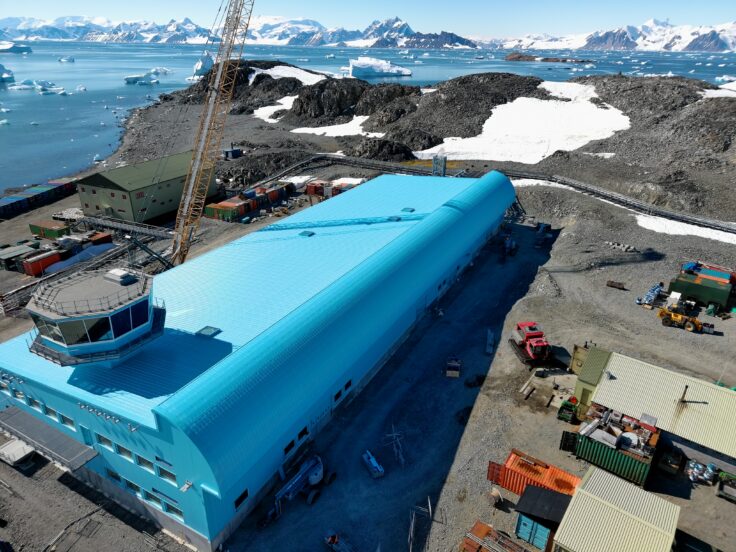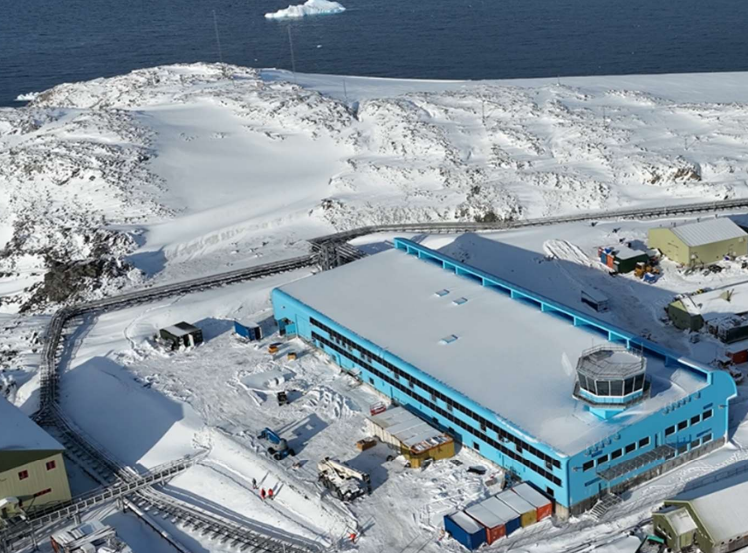The 2025 - 2026 Antarctic season is a landmark for the British Antarctic Survey (BAS) and its Antarctic Infrastructure Modernisation Project (AIMP), as the new Discovery Building begins to take on its operational role. Specialist teams will be on site from November to check the building's critical systems are working as expected and to carefully manage the removal of six older structures, the functions of which are now integrated within the Discovery Building.
Commissioned by the Natural Environment Research Council (NERC), as part of the long-term government funded AIMP, the Discovery Building serves as the "beating heart" of Rothera and will provide all electricity, drinking water, drainage, heat, and communications from a single, modern hub. It has 60 rooms across an internal area of 4,500 square metres and is intended to reduce BAS's carbon emissions in Rothera by 25%.

Key elements of the facility are already in operation:
- The energy centre is supplying power, with engineers now optimising the generator system to recover heat more efficiently to warm the building and to distribute heat to the nearest 24-hour operational building, New Bransfield House.
- The vehicles workshop - offering a safe, more efficient and comfortable environment for maintenance teams.
- The operations tower - overseeing air access to Rothera and into the deep field.
- The central store - housing all Rothera's supplies.
From construction to responsible removal
As the Discovery Building takes on its operational role, work will now begin to responsibly retire older infrastructure.
The buildings being dismantled include Fuchs (formerly used for field preparation by science teams), Chippy Shed (which housed a carpentry workshop and electronics workspace), Binghams (previously a heavy workshop, later a carpentry store), the previous vehicles garage, the old generator shed, and Old Bransfield House with its operations tower, which was once the control centre for flying and home to science offices, originally built as accommodation.
The process - involving isolating services, internal strip-out and dismantling - is designed to minimise environmental impact. All deconstruction waste will be removed from Antarctica and returned to the UK for recycling. Where possible, materials are being assessed for potential reuse.
Throughout the season, teams will continue with testing and confirming mechanical, electrical, and plumbing systems work as we expect, with the recommissioning of some of the critical systems due to be completed by the end of January 2026. This includes fine-tuning the generators so that they are recovering and using as much heat as possible.
Teams will also check and refine the building's fire detection and alarm systems. The Discovery Building incorporates a range of systems suited to different risk levels, including standard heat and smoke detectors throughout and advanced VESDA (Very Early Smoke Detection Apparatus) units in higher-risk areas, such as the central store and vehicles garage, which continuously monitor air for early signs of smoke particles.
Finishing touches to the interior will continue including painting and decorating, notably in communal break-out areas and welfare areas of the building. Training and handover documentation for the Discovery Building will follow in March 2026, with full handover anticipated to be completed by the end of April 2026.

David Brand, Rothera Modernisation Senior Project Manager at BAS, said: "This season represents a pivotal stage in the Antarctic Infrastructure Modernisation Programme. The Discovery Building is steadily coming to life as we test, commission and transition operations; a remarkable effort from everyone involved. Delivering such a project requires teams to be flexible and adaptable because working in Antarctica means responding to constant change. The building enables science in Antarctica, and it positions Rothera to support research for generations to come."
Elen Jones, Programme Director at BAS for AIMP said: "Seeing the Discovery Building come into operation is testament to the huge effort made by everyone involved in this groundbreaking project. Enormous thanks to our teams in BAS and our partners, BAM, Ramboll, Sweco, G&A Barnie Group, Turner & Townsend and Hugh Broughton Architects who have contributed to achieving this incredible milestone."
Huw Jones, Executive Director, Infrastructure BAM UK & Ireland, said: "Delivering the Discovery Building has been a truly collaborative effort in one of the toughest environments on Earth. As systems are fine-tuned and the station fully transitions, we're proud to continue working alongside BAS to ensure everything performs as designed for the science and operations teams who depend on it."






